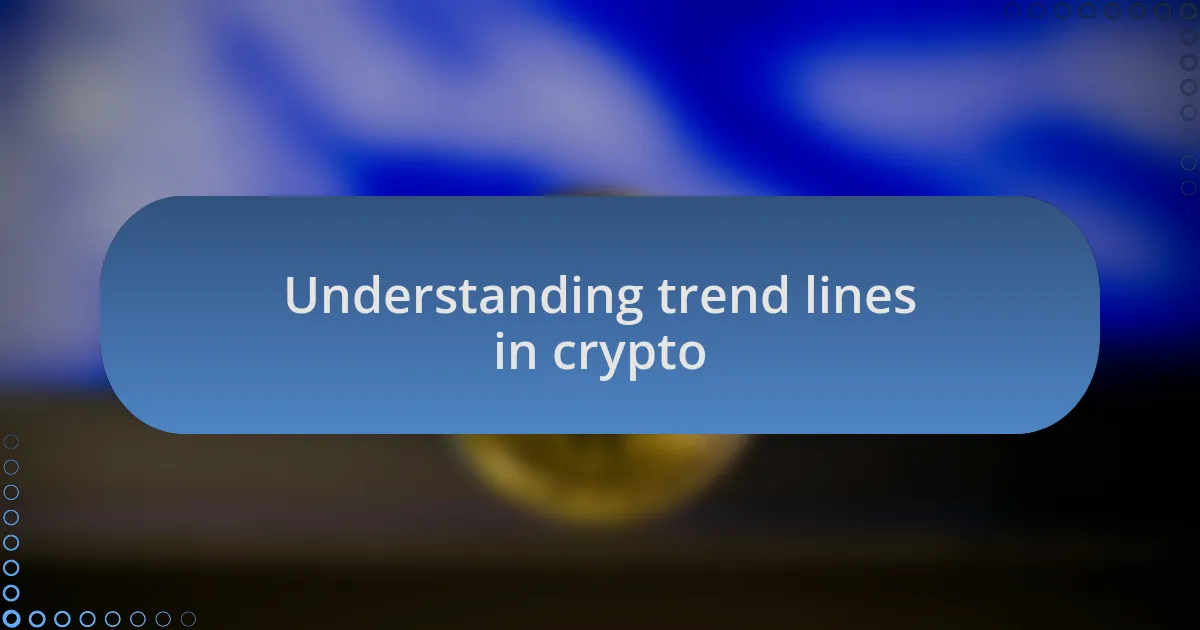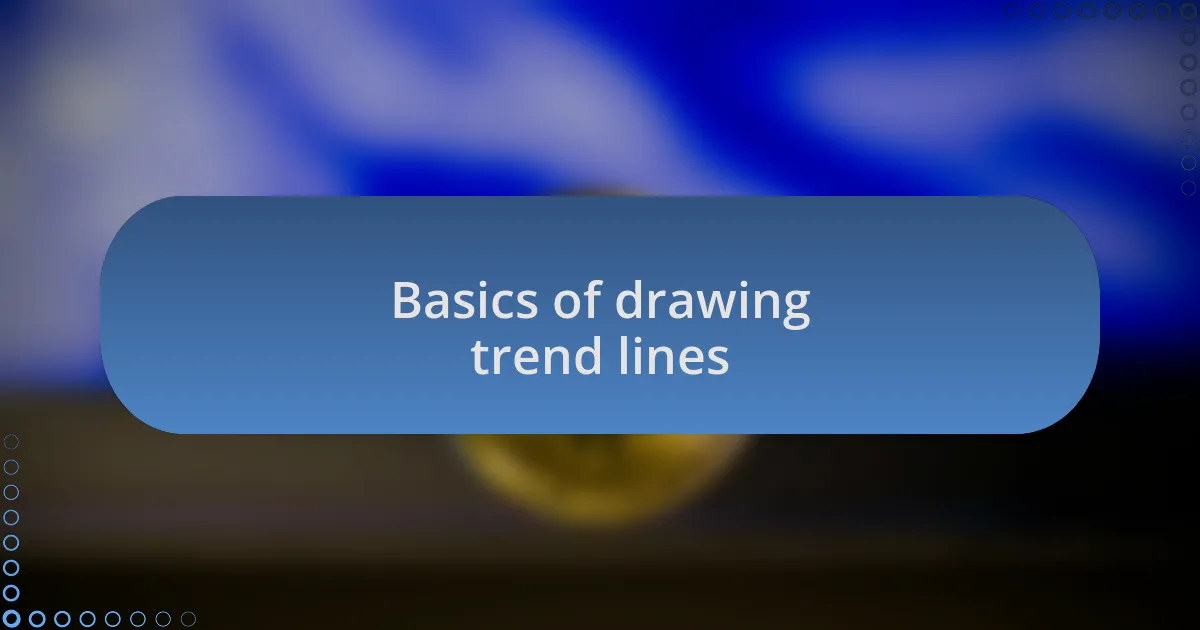Key takeaways:
- Trend lines are essential for visualizing price movements in crypto and offer insights into support and resistance levels.
- They reflect trader emotions, influencing market sentiment and decision-making.
- Successful trend line drawing involves identifying significant highs and lows while maintaining consistency across different time frames.
- Understanding the psychology behind trend lines enhances market analysis and trading strategies.

Understanding trend lines in crypto
Trend lines are fundamental tools in crypto analysis that help visualize price movements over time. I remember the first time I drew a trend line on a Bitcoin chart; it felt as if I was uncovering a hidden pattern. The simplicity of connecting the highs or lows to see where the market might head next opened my eyes to the potential of technical analysis.
When I first learned about trend lines, I found myself questioning their reliability. Can a simple line really predict market movements in such a volatile space? My experiences taught me that while they might not be infallible, they do provide invaluable insights into support and resistance levels. In a market as unpredictable as crypto, understanding these lines can mean the difference between timing your trades perfectly and missing out.
As I gained more experience, I realized that trend lines are not just about numbers; they’re about emotions. They reflect the collective sentiment of traders—fear, hope, and greed. I often think about how drawing a downward trend line can evoke a sense of caution. Conversely, an upward trend gets my adrenaline pumping with excitement about potential gains. This emotional connection helps wrap the cold data in a layer of human experience, making my analysis more intuitive.

Basics of drawing trend lines
Drawing trend lines might seem straightforward, but there’s an art to it. My first few attempts were met with frustration as I struggled to connect the dots accurately. I remember feeling defeated when a line I confidently drew ended up cutting through price action rather than guiding me. Over time, I learned that the key is to identify significant highs and lows on the chart, making sure those points are relevant to the overall price movement.
When drawing an upward trend line, I often find myself reflecting on the importance of support. I recall a moment when I connected two major lows on an Ethereum chart and watched as the price bounced off that line multiple times. It struck me how traders collectively recognized that level as a safety net. It’s fascinating how these lines can visually represent the market’s psychology, almost like a mirror to the traders’ confidence.
While drawing them, it’s crucial to be consistent. I noticed that different chart time frames can lead to varying interpretations. For instance, a trend that appears strong in a 4-hour chart might look weaker in a daily chart. Have you experienced that disconnect? I certainly have, and it taught me the importance of zooming in and out to understand the bigger picture. This practice has enriched my analysis, making the trend lines not just lines on a chart but powerful indicators of market sentiment.